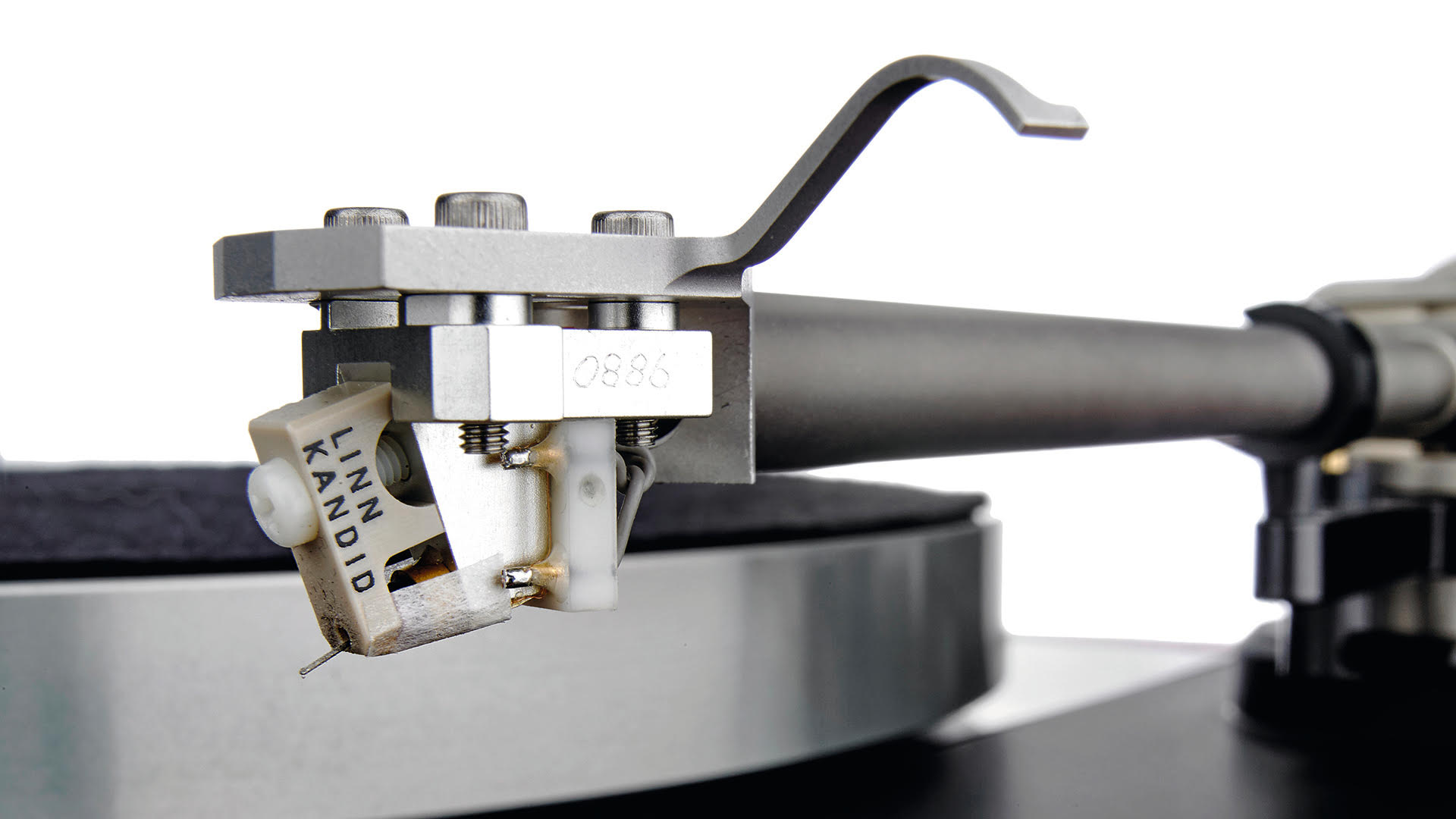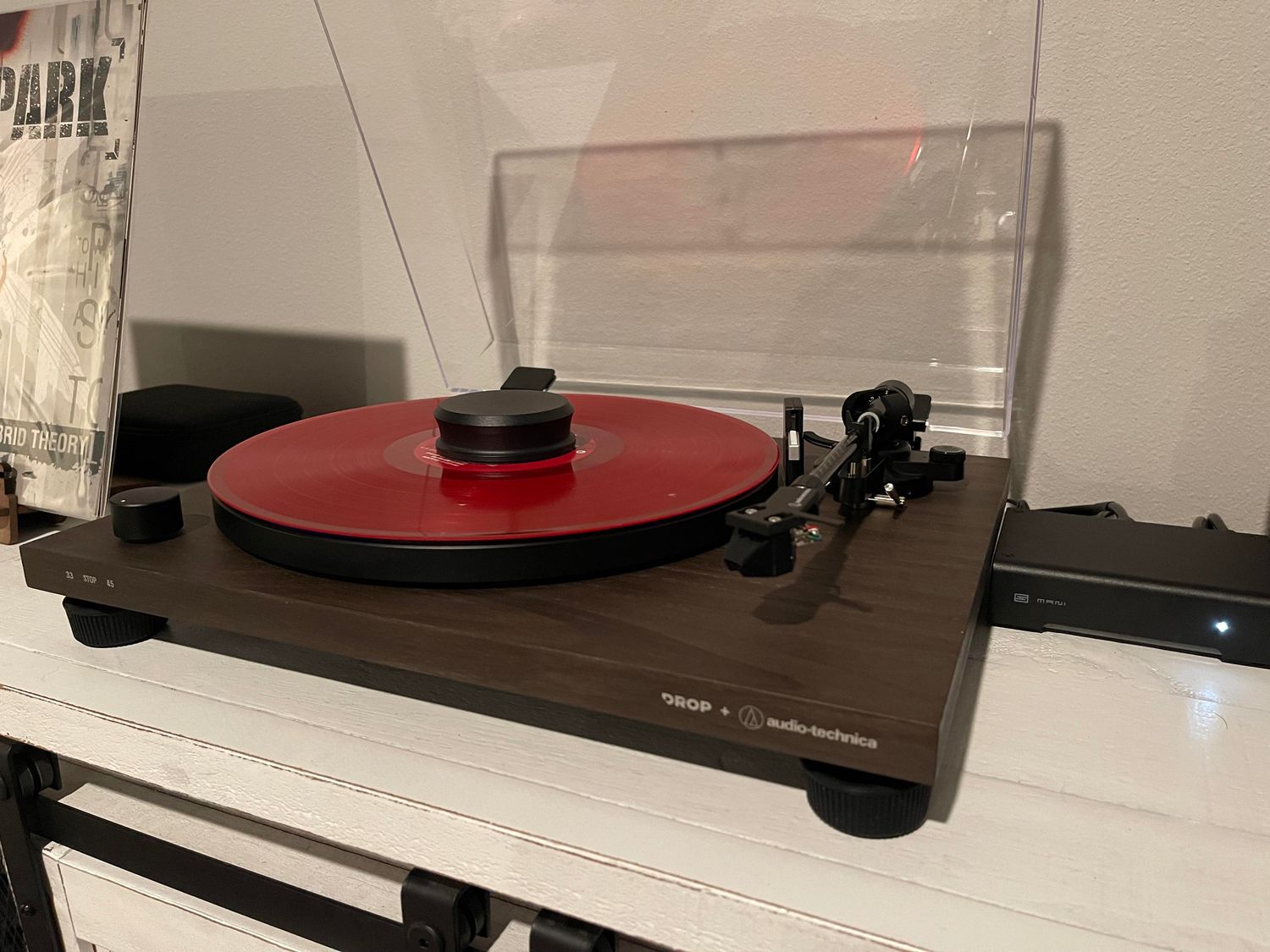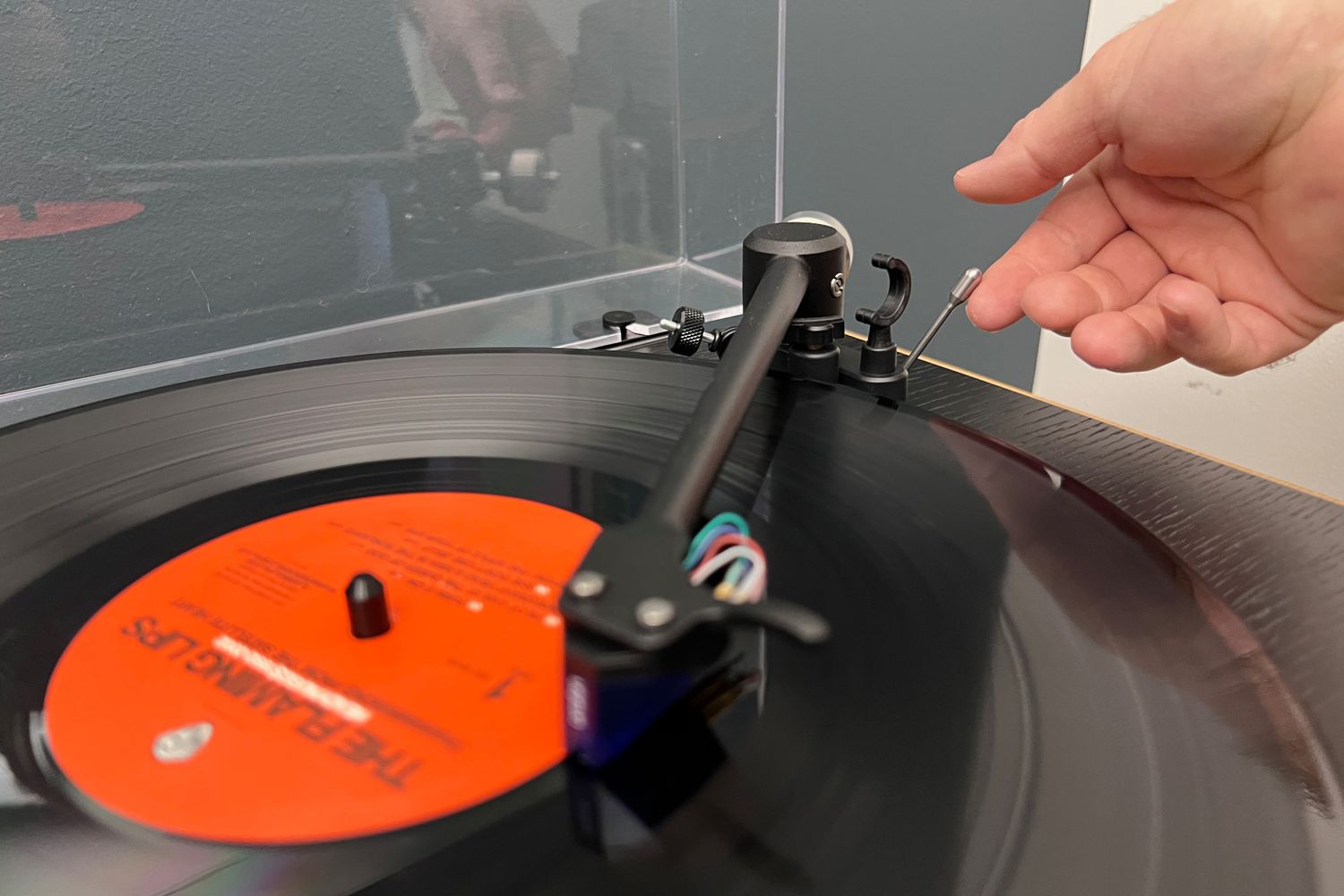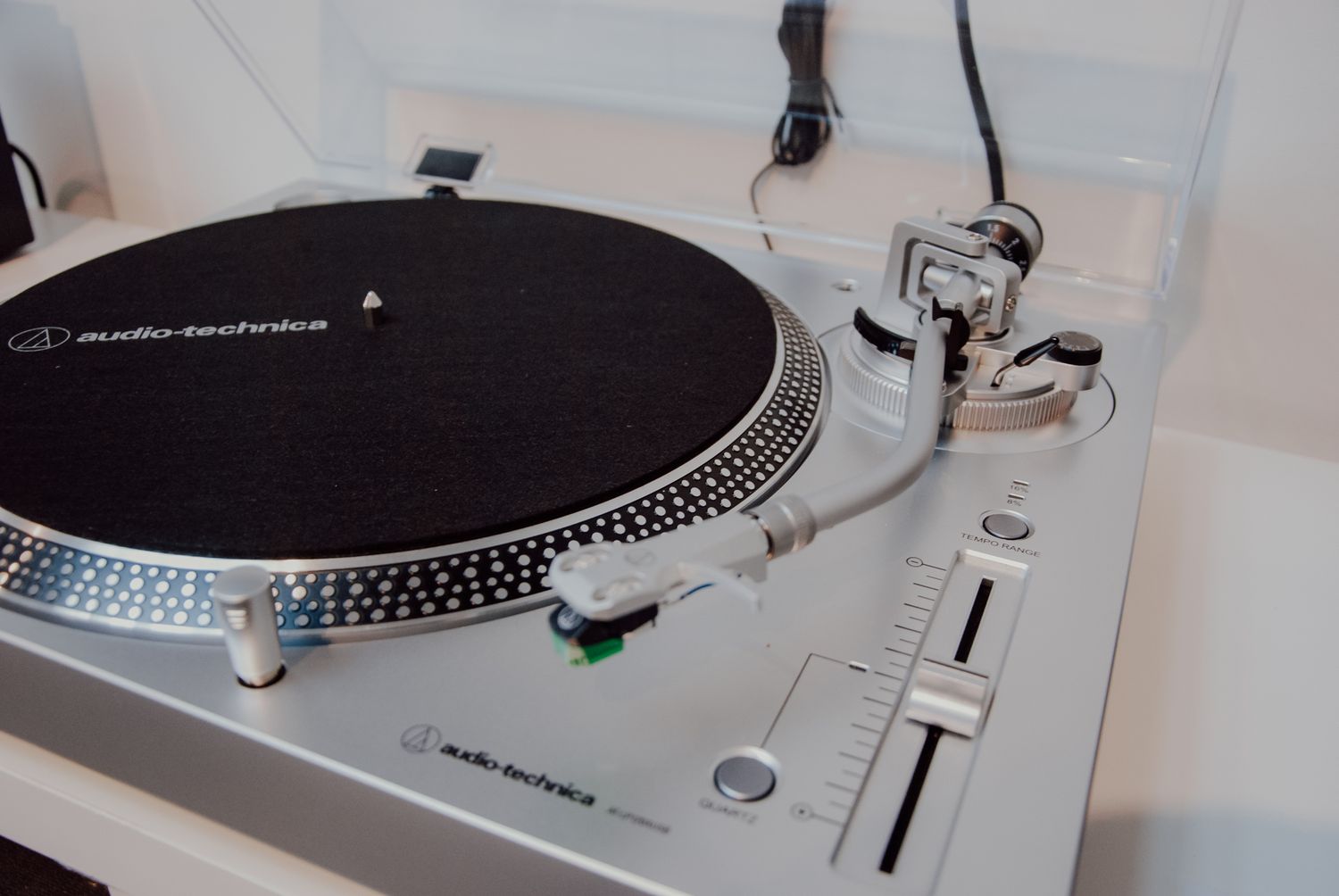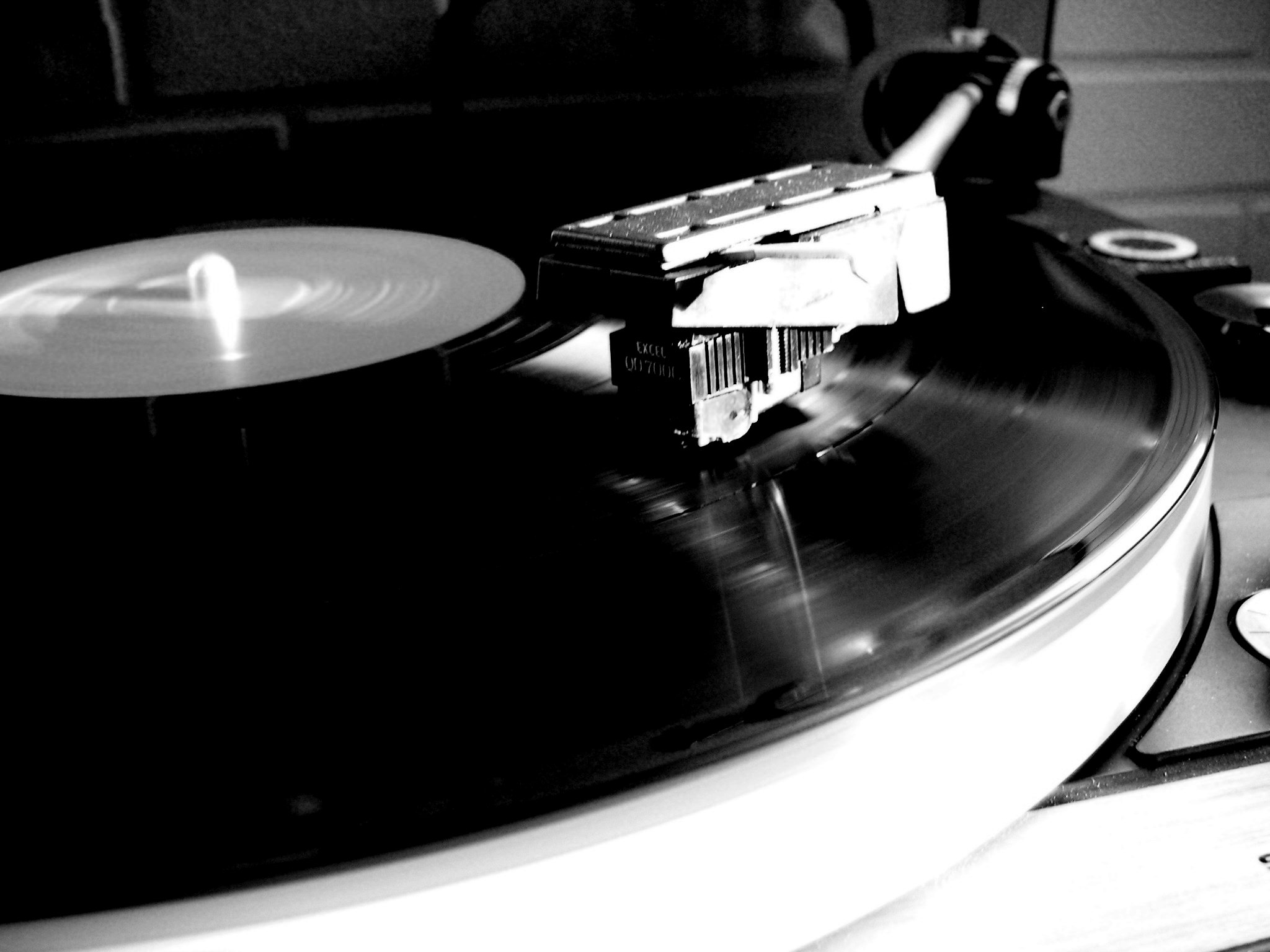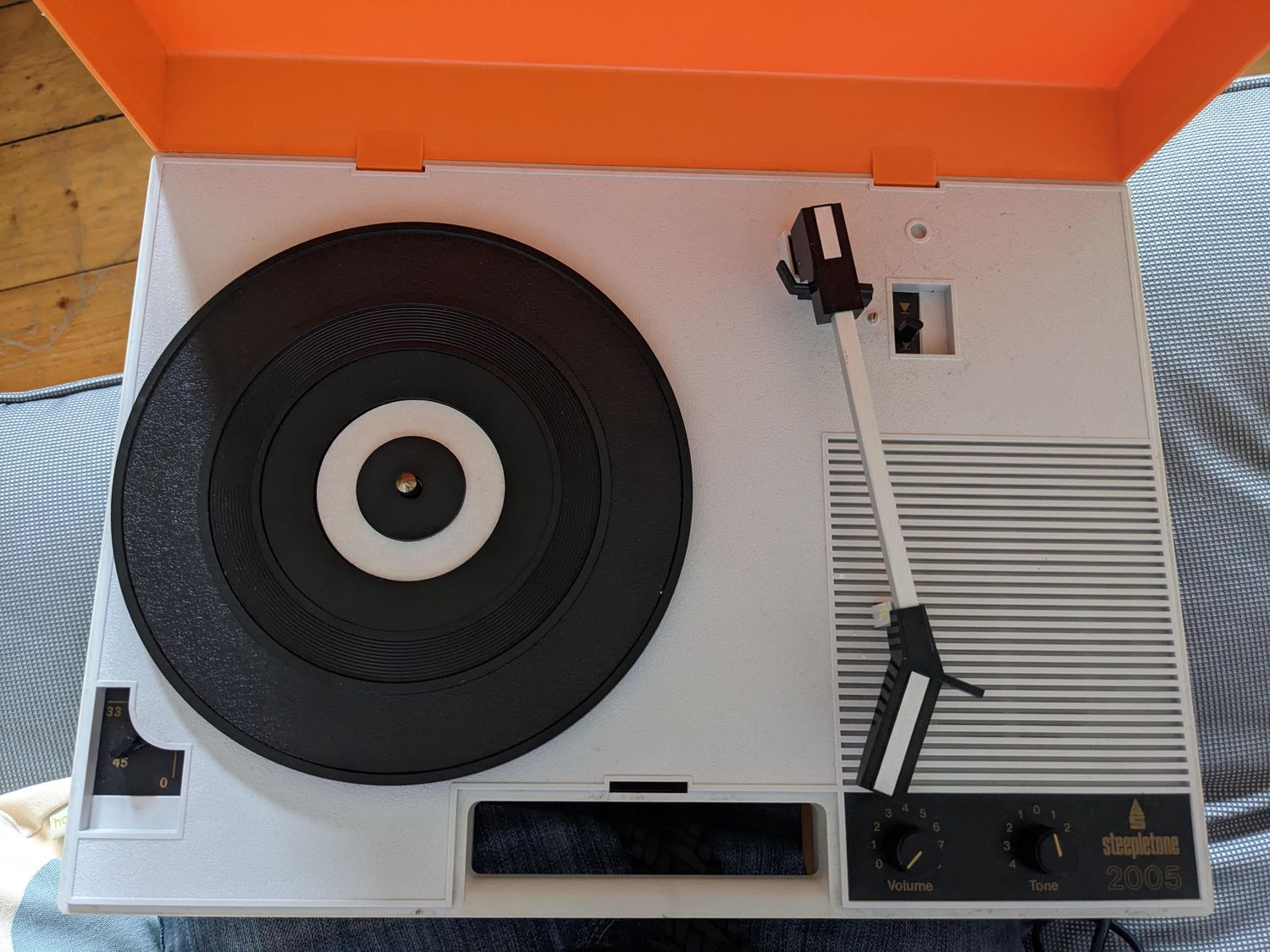Home>Devices & Equipment>Turntable>What Is A Stylus On A Turntable
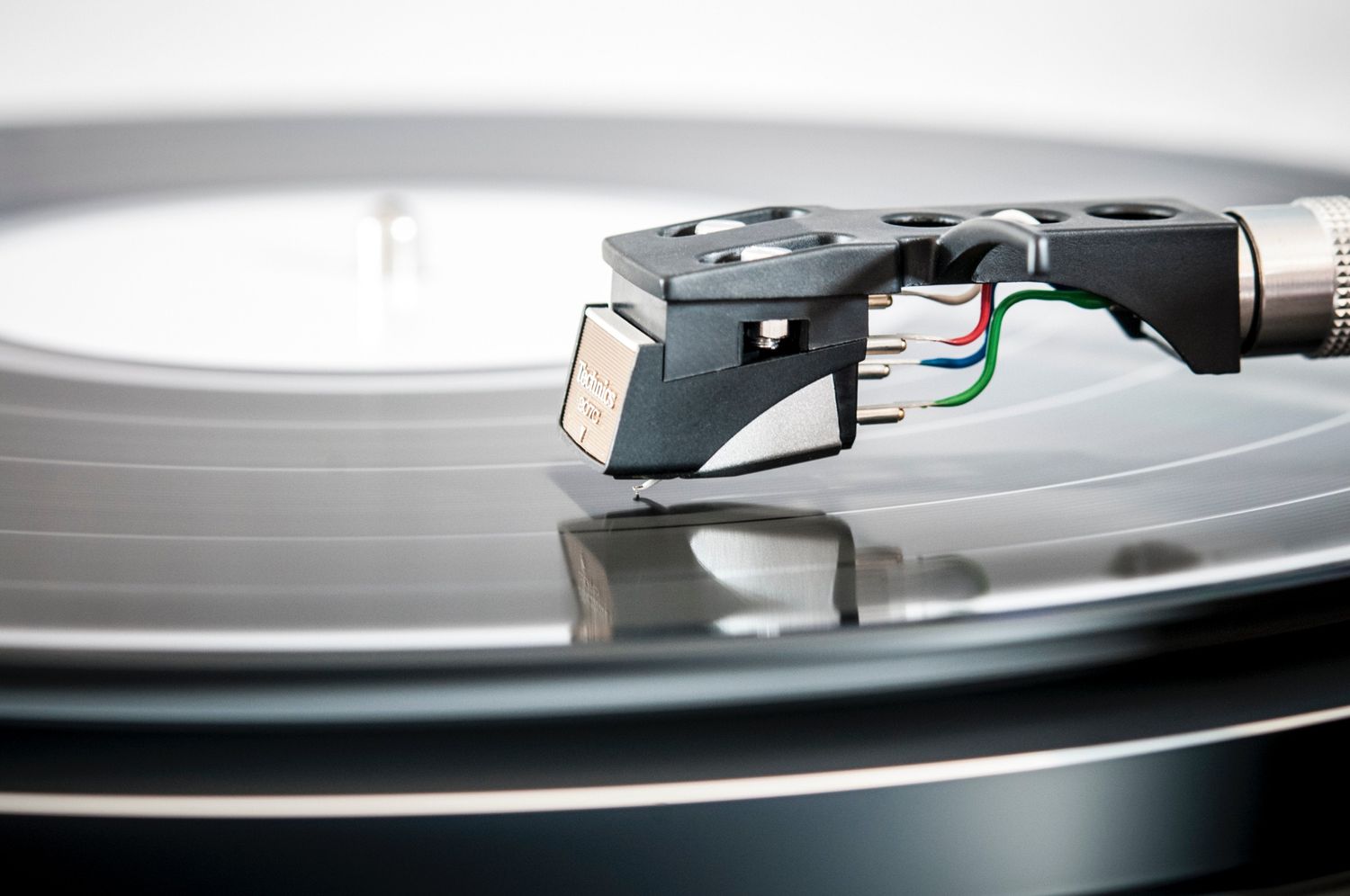

Turntable
What Is A Stylus On A Turntable
Modified: January 22, 2024
Discover what a stylus on a turntable is and how it enhances your listening experience. Explore the importance of this essential component for your turntable.
(Many of the links in this article redirect to a specific reviewed product. Your purchase of these products through affiliate links helps to generate commission for AudioLover.com, at no extra cost. Learn more)
Table of Contents
Introduction
Turntables have been making a comeback in recent years, and with good reason. There’s something incredibly satisfying about the warm, rich sound that vinyl records produce. However, the turntable itself is just one part of the equation. To truly experience the best sound quality, you need to have a good understanding of the various components that make up a turntable system, and one such component is the stylus.
The stylus, also known as a needle, is a small but crucial part of the turntable. It is what comes into direct contact with the grooves of the vinyl record, translating those undulations into electrical signals that can be amplified and converted into sound. In other words, the stylus is responsible for the actual playback of the music.
As with any mechanical component, the quality and characteristics of the stylus can significantly impact the overall sound performance. This is why it’s essential to have a good understanding of what a stylus is, how it works, and why it’s important to choose the right one for your turntable setup.
Definition of a stylus
A stylus is a small, needle-like instrument that is responsible for tracking the grooves of a vinyl record. It is the primary point of contact between the turntable and the record, translating the physical variations in the groove into electrical signals that can be amplified and converted into audible sound.
The stylus is typically made from a hard material, such as diamond or sapphire, which allows it to slide smoothly along the vinyl grooves without causing damage. It is attached to a cartridge, which is responsible for converting the mechanical movements of the stylus into electrical signals.
The design and construction of a stylus have a significant impact on the accuracy and fidelity of the sound reproduction. Different stylus shapes and sizes can affect tracking ability, channel separation, frequency response, and overall sound quality.
Styli come in various types and styles, including conical, elliptical, microlinear, and Shibata, each with its own advantages and disadvantages. It’s important to understand the characteristics of each stylus type to choose the one that best suits your listening preferences and the capabilities of your turntable.
Overall, the stylus is a critical component of the turntable system. Its role in accurately tracking the grooves of the vinyl record is essential for achieving high-quality sound reproduction and an enjoyable listening experience.
Function of a stylus
The primary function of a stylus on a turntable is to read the microscopic grooves on a vinyl record and convert the physical variations into electrical signals. It acts as a bridge between the analog medium of the vinyl record and the digital or analog audio output of the turntable.
When a vinyl record is played, the stylus, attached to the cartridge, is carefully placed in the groove of the record. As the record spins, the stylus follows the contours of the groove, tracing the tiny undulations carved into the vinyl’s surface. These undulations represent the encoded audio information.
As the stylus moves along the groove, it vibrates and generates electrical signals in response to the variations in the groove. These electrical signals are then sent through the tonearm and cartridge, where they are amplified and converted into sound waves that we can hear through the speakers or headphones.
The function of the stylus is not limited to simply reproducing the sound from the grooves. It also plays a crucial role in accurately tracking the groove and maintaining the proper alignment and balance between the stylus and the record surface. Proper tracking ensures that the stylus remains in contact with the groove without slipping or causing excessive wear to the record.
Furthermore, the stylus must also minimize any unwanted noise or distortion caused by imperfections on the record’s surface. It does this by effectively navigating through scratches, dust, and other contaminants, while still extracting as much detail and fidelity from the groove as possible.
In summary, the function of a stylus on a turntable is to read the grooves of a vinyl record and convert the physical variations into electrical signals, which are then amplified and converted into sound. It plays a critical role in accurate tracking, maintaining proper alignment, and minimizing unwanted noise, all of which contribute to a high-quality audio playback experience.
Components of a stylus
A stylus is composed of several key components that work together to accurately track the grooves of a vinyl record and produce high-quality sound reproduction.
1. Needle: The needle is the tip of the stylus that physically comes into contact with the grooves of the record. It is typically made of a hard material such as diamond or sapphire to ensure durability and precise tracking. The shape of the needle can vary depending on the stylus type, with common shapes including conical, elliptical, microlinear, and Shibata.
2. Cantilever: The cantilever is a thin, flexible rod that holds the needle and connects it to the cartridge. It acts as a suspension system, allowing the stylus to effectively follow the grooves while maintaining proper alignment and pressure. The material and construction of the cantilever can affect the overall sound performance, with options such as aluminum, boron, or even synthetic materials.
3. Cartridge: The cartridge is the housing that contains the stylus and converts the mechanical vibrations into electrical signals. It usually consists of a body, magnet, coils, and a stylus assembly. The cartridge plays a significant role in determining the overall sound quality, as it affects factors such as tracking ability, channel separation, and output signal strength.
4. Suspension: The suspension system is responsible for ensuring the proper movement and stability of the stylus. It consists of a small spring or similar mechanism that allows the stylus to smoothly track the grooves while maintaining the correct pressure against the record surface. A well-designed suspension system helps to minimize tracking errors and unwanted vibrations.
5. Alignment Geometry: The alignment geometry refers to the precise positioning and orientation of the stylus in relation to the record grooves. Proper alignment is crucial for accurate tracking and sound reproduction. Different turntables may require specific alignment standards, such as the popular Baerwald, Löfgren, or Stevenson geometries.
Each of these components plays a vital role in the performance of the stylus. The quality and design of these components impact the accuracy, tracking ability, and durability of the stylus, ultimately affecting the overall sound quality and listening experience.
Types of Stylus
There are several types of stylus available for turntables, each with its own design and characteristics. The type of stylus you choose can have a significant impact on the sound quality and performance of your turntable system.
1. Conical Stylus: The conical stylus is the most common and affordable type. It has a rounded shape, resembling a cone, that makes contact with a larger portion of the groove. While conical styli can provide good tracking ability, they typically offer lower audio fidelity compared to other types.
2. Elliptical Stylus: The elliptical stylus has a more pointed shape, resembling an oval. This shape allows for more precise tracking and better frequency response compared to a conical stylus. Elliptical styli are known for producing a more detailed and accurate sound reproduction, making them a popular choice for audiophiles.
3. Microlinear Stylus: The microlinear stylus, also known as a micro-ridge or line contact stylus, has an even finer and more delicate shape. This stylus type offers superior tracking ability and can extract more information from the record grooves, resulting in improved clarity, instrument separation, and overall sound quality.
4. Shibata Stylus: The Shibata stylus, named after its inventor, is a specialized type of stylus that features a hyperelliptical shape. It provides excellent tracking ability and can extract even more detail and frequency response from the vinyl grooves. Shibata styli are commonly used for high-end turntables and audiophile setups.
5. Spherical Stylus: The spherical stylus is similar to the conical stylus but has a completely rounded shape. It is typically used on older, vintage turntables or entry-level models. While spherical styli may not offer the same level of precision as other types, they can still provide satisfactory sound quality for casual listening.
It’s important to note that the type of stylus you choose should be compatible with your turntable’s cartridge. Different cartridges have different mounting options and specifications, so it’s essential to ensure compatibility before making a selection.
Ultimately, the type of stylus you choose will depend on your budget, listening preferences, and the capabilities of your turntable system. It’s worth considering the level of audio fidelity and precision you desire, as a higher-end stylus can significantly enhance the overall sound quality and immersion of your vinyl listening experience.
Importance of a Good Stylus
A good stylus is essential for achieving optimal sound quality and preserving the longevity of your vinyl records. Here are some key reasons why investing in a high-quality stylus is important:
1. Sound Quality: The stylus is the main point of contact between the turntable and the record, directly affecting the fidelity and accuracy of the sound reproduction. A good stylus can extract more detail from the grooves and reproduce a wider frequency range, resulting in a more immersive and enjoyable listening experience. It can greatly enhance the clarity, instrument separation, and dynamics of the music, allowing you to fully appreciate the nuances and intricacies of the recording.
2. Preservation of Vinyl: Vinyl records are delicate and can easily be damaged if not handled properly. A properly aligned and calibrated stylus can minimize record wear and reduce the risk of groove damage caused by improperly tracking or excessive force. By using a good stylus, you can prolong the life of your vinyl collection and ensure that they continue to deliver exceptional sound quality over time.
3. Tracking Accuracy: A good stylus is designed to track the grooves of a record accurately. It can navigate through imperfections, dust, and other contaminants without causing skips, distortion, or excessive noise. Proper tracking ensures that the stylus maintains consistent contact with the grooves, extracting the full range of audio information encoded into the record.
4. Dynamic Range and Channel Separation: High-quality styli can accurately reproduce the wide dynamic range present in vinyl recordings, capturing both the softest whispers and the loudest crescendos with fidelity. Additionally, a well-designed stylus can achieve excellent channel separation, ensuring that each instrument and voice occupies its proper space in the stereo image, creating a more immersive and realistic listening experience.
5. Reduced Surface Noise: A good stylus, with its optimal tracking ability, can minimize surface noise caused by dust, scratches, and other imperfections on the record surface. It can reduce audible pops, clicks, and other disturbances, allowing you to enjoy the music without distraction. This becomes especially important when listening to delicate and quiet passages in the music.
In summary, a good stylus is crucial for obtaining outstanding sound quality, preserving the condition of your vinyl records, and achieving accurate tracking and reproduction. It can elevate your vinyl listening experience to new heights, allowing you to fully appreciate the artistry and craftsmanship of the music.
How to Choose the Right Stylus
Choosing the right stylus for your turntable is crucial to optimize sound quality and ensure compatibility with your system. Here are some important factors to consider when selecting a stylus:
1. Turntable Compatibility: Start by checking the specifications and recommendations of your turntable’s manufacturer. Different turntables have specific requirements regarding cartridge compatibility, tracking force, and stylus type. Ensure that the stylus you choose is compatible with your turntable’s cartridge mount and tracking force range.
2. Stylus Type: Consider the type of stylus that best suits your listening preferences and budget. The different stylus types, such as conical, elliptical, microline, and Shibata, offer varying levels of sound quality and precision. A conical stylus may be sufficient for casual listening, while elliptical or microline styli are better for audiophiles seeking higher fidelity.
3. Budget: Set a budget for your stylus purchase. Stylus prices can vary greatly, depending on the type, brand, and quality. It’s important to find a balance between your budget and the level of sound quality you desire. Keep in mind that investing in a higher-quality stylus can significantly enhance your listening experience and help protect your records.
4. Listening Preferences: Consider the genres of music you most frequently listen to and your overall listening preferences. Some styli may excel in reproducing certain types of music, such as classical or jazz, while others may deliver a more balanced sound across various genres. Research reviews and user feedback to get an idea of the stylus’ sound signature and suitability for your preferred music.
5. Tracking Force and Compliance: Ensure that the stylus is compatible with your turntable’s recommended tracking force. The tracking force is the amount of downward pressure exerted by the stylus on the record. It is essential to follow the manufacturer’s guidelines to prevent excessive wear on the record or damaging the stylus itself. Additionally, consider the compliance of the stylus, which relates to its ability to track the record’s movements properly. A higher compliance stylus can better accommodate uneven surfaces or damaged records.
6. Brand Reputation and Support: Research reputable brands in the turntable industry that have a proven track record of producing high-quality styli. Look for brands that offer reliable customer support, warranty coverage, and replacement options. This can provide peace of mind and assistance if any issues arise with your stylus in the future.
Remember, selecting the right stylus is a balance between your budget, sound preferences, and turntable compatibility. Taking the time to research and consider these factors will help you make an informed decision and enhance your vinyl listening experience.
Common Issues with Stylus
While stylus technology has advanced significantly over the years, there are still some common issues that can arise with their usage. Being aware of these issues can help you identify and address them promptly. Here are a few common problems that can occur with stylus:
1. Wear and Tear: One of the most common issues with stylus is wear and tear. Over time, the stylus can experience gradual degradation due to the friction and pressure applied to the record grooves. This can lead to a decline in sound quality and fidelity. Regularly inspect your stylus for signs of wear, such as blunting or flattening of the needle tip, and replace it as necessary to ensure optimal performance.
2. Misalignment: Improper alignment of the stylus can result in issues such as poor tracking, distortion, or uneven channel balance. The stylus should be aligned correctly to match the specifications of your turntable’s cartridge and the recommended alignment geometry. Consult your turntable’s manual or seek professional assistance to ensure proper alignment of the stylus for optimal performance.
3. Incorrect Tracking Force: Applying too much or too little tracking force can cause tracking problems and damage both the stylus and the record. Insufficient tracking force can result in the stylus skipping or mistracking, while excessive tracking force causes excessive wear on the record and the stylus. Use a tracking force scale and follow the manufacturer’s guidelines to set the correct tracking force for your stylus.
4. Debris and Contaminants: Dust, dirt, and other debris can accumulate on the stylus and affect its performance. This can result in increased surface noise, distorted sound, or compromised tracking ability. Regularly clean the stylus using a stylus brush or a specialized cleaning solution to remove any contaminants and maintain optimal performance.
5. Improper Handling: Mishandling the stylus can lead to damage or misalignment. It’s important to handle the stylus with care, avoiding touching the needle or dropping it. Additionally, when changing the stylus, make sure to follow the proper procedure to ensure a secure and correct installation.
6. Excessive Force: Applying excessive force to the stylus can cause damage to the record grooves and the stylus itself. Avoid manually pushing down on the stylus or playing warped or damaged records, as this can lead to mistracking and irreparable damage.
If you encounter any issues with your stylus, it’s recommended to consult the turntable manufacturer’s guidelines or seek assistance from a professional to diagnose and resolve the problem. Taking proper care of your stylus and addressing issues promptly will help ensure optimal performance and extend its lifespan.
Maintenance and Care of a Stylus
Proper maintenance and care of your stylus are essential for optimal performance and longevity. Here are some important tips to keep your stylus in excellent condition:
1. Cleaning: Regularly clean your stylus to remove any dust, dirt, or debris that may accumulate on the needle. Use a stylus brush or a specialized stylus cleaning solution to gently brush away any particles. Avoid using excessive force or abrasive materials that could damage the delicate stylus tip.
2. Avoid Touching the Stylus: It’s important to avoid touching the stylus needle with your fingers. The oils and debris on your fingers can transfer to the stylus, affecting its performance. If you need to handle the stylus, use a stylus brush or wear clean, lint-free gloves to minimize any potential contamination.
3. Record Care: Properly maintain your vinyl records to avoid unnecessary wear on the stylus. Clean records before playing them to remove any dust or debris that could transfer onto the stylus. Store records in protective sleeves to prevent scratches and minimize the risk of contaminants coming in contact with the stylus.
4. Tracking Force: Ensure that you set the correct tracking force for your stylus as recommended by the manufacturer. An improper tracking force can cause distortion, mistracking, and excessive wear on both the stylus and the record. Use a tracking force gauge to accurately set and measure the tracking force.
5. Avoid Playing Damaged or Dirty Records: Playing warped, scratched, or dirty records can put additional strain on the stylus and increase the risk of damage. Inspect your records for visible damage or debris before playing them, and avoid playing records with severe damage, as it can cause irreparable harm to both the stylus and the record.
6. Regular Inspections: Regularly inspect your stylus for signs of wear or damage. Look for any visible changes in the shape or condition of the needle tip. If you notice any significant wear, blunting, or flattening of the stylus, it may be time to replace it to maintain optimal playback performance.
7. Professional Maintenance: For more thorough maintenance and stylus alignment, it is recommended to consult a professional audio technician or turntable specialist. They can provide expert cleaning, alignment, and calibration services to ensure the continued performance and longevity of your stylus.
By following these maintenance and care practices for your stylus, you can maximize its lifespan, maintain sound quality, and extend the longevity of your vinyl records. Taking the time to properly care for your stylus will result in a more enjoyable listening experience and prolonged satisfaction with your turntable setup.
Conclusion
The stylus is a vital component of a turntable system, responsible for translating the grooves on a vinyl record into audible sound. By understanding the definition, function, and components of a stylus, you can appreciate its importance in achieving high-quality sound reproduction.
Choosing the right stylus for your turntable requires considering factors such as stylus type, compatibility, budget, and personal listening preferences. A good stylus can significantly enhance sound quality, reduce surface noise, and preserve the condition of your vinyl records.
However, it’s important to be aware of common issues that can occur with stylus usage, such as wear and tear, misalignment, incorrect tracking force, debris accumulation, and mishandling. By properly maintaining and caring for your stylus, including regular cleaning, avoiding touching the needle, and setting the correct tracking force, you can ensure optimal performance and prolong the lifespan of both the stylus and your records.
In conclusion, investing in a high-quality stylus and practicing proper maintenance and care will enhance your vinyl listening experience by delivering accurate sound reproduction, minimizing surface noise, and preserving your valuable record collection. Take the time to choose the right stylus for your setup, follow proper care practices, and enjoy the rich, immersive sound that only a turntable with a good stylus can provide.


